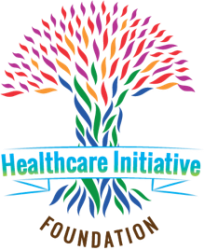Philanthropy can be so much more than the dollars distributed, and when funders invest with the community and include community voice in the work, we all are better stewards of these resources. Creating a successful partnership between funders and nonprofit requires calculated leaps together, and longer-term and more robust commitments supporting innovation, on-going learning, advocacy, and the facilitation of vital connections.
At the onset of the pandemic, the Healthcare Initiative Foundation (HIF) was approached by Black Rock Center for the Arts (BRCA) for seed funding to reopen their closed facility to serve as a temporary warehouse and distribution center for donated food to be disseminated to the community. All that was needed was funding to bring back the Facilities Manager that was laid-off to safely reopen for nonprofit partners and volunteers to operate.
As the planning and implementation commenced, the Foundation:
- Engaged with community leaders and nonprofits to bring on more partners and volunteers to meet the ever-growing need;
- Frequently presented on the HUB model to community leaders and stakeholders;
- Created vital connections to address barriers and expand the scope of services;
- Made additional calculated investments to other nonprofit partners to align the Hub’s work with testing, vaccines, and telehealth; and
- Personally volunteered to support holiday giving, Easter, Halloween, and other events.
The benefits of HIF’s ongoing collaborative partnership relationship have far exceeded the initial seed funding of just $5,000.
Over the last year, the UpCounty Distribution Hub at BRCA has grown to serve #1200 individuals weekly with comprehensive resources (i.e., activity kits, culturally appropriate and quality perishable and nonperishable foods, sports equipment, COVID safety-kits, diapers and formula, and sanitary kits, etc.) and case management to connect to vital services (i.e., rental services, testing, vaccines, telehealth, etc.). This Hub has also served as a model for (7) seven other regions in Montgomery County to create community-centered, culturally-responsive, and integrated service hubs and will be one of the innovations that has transformed service delivery during the pandemic.
What does it take to transform the funder and grantee dynamic from primarily a transactional relationship to an authentic, collaborative partnership?
Some key strategies that HIF has found to be vital are as follows: address systemic barriers; invest in innovation; integrate services and align investments; and provide on-going implementation support.
Address the systemic barriers that are deterrents and create obstacles to service delivery. Funders can utilize their personal and professional networks to connect leaders with resources, information, and social and political capital to navigate these barriers and build lasting trust. Grantees are often unable to fully advocate because of the power dynamics and the dependency on these institutions for future support and access. Philanthropy can serve as the neutral broker in these conversations to help navigate the change.
Invest in innovation serving as a valuable equity incubator. Investors can fund new and/or emerging nonprofit leaders, particularly offering support to BIPOC leaders that have been historically underinvested in, to build their capacity to offer sustainable services. These organizations frequently start off as an all-volunteer run organization and assisting them with this transformation as they grow is imperative. Funders can also support proof of concepts to build credibility and fund community-based strategies that are built with the community versus for community. We have learned repeatedly that just building the program and service is not enough as access requires attentiveness to cultural norms, language capacity, transportation, childcare, employment flexibility, and safety. Engaging with community on the design of the plan and throughout the implementation is imperative to ensure that these opportunities are accessible by all in the community.
Integration of services and aligning investments is fundamental to ensure continuity of care and enhance efficiency through shared resources and partnership. As funders, we have the opportunity and privilege to meet with so many nonprofits doing phenomenal work, so it is incumbent on us to share and connect. No one organization needs to do it all, but through vital connections and collaboration their participants can have access to it all and each partner can do what they do best. For example, medical providers can have access through collaboration and integrated funding to healthy food and behavioral health services, greatly improving the health and wellness of their patients. Additionally, as the example above highlighted, a Hub can be the collection center of many needed resources to disseminate seamlessly to residents versus a resident having to go to multiple locations to get all that they need.
Provide ongoing implementation support offering opportunities for grantees to continuously engage with funders so that problem-solving can occur. These discussions can lead to advocacy, technical assistance, and/or a chance to offer flexibility around the project design, budgeting, and timing for the project. Through the pandemic, this lessoned was reinforced as our valued partners and systems were adapting to a very dynamic environment. Being embedded in the change enabled us to be the vital support to nonprofits to ensure resources and services were available even if the strategy and modality changed. We were successful together.
As we continue our path to recovery, HIF is committed to advancing our collaborations and partnerships with our nonprofits and fellow philanthropists as we know investments are not enough to yield the change we want to see in our community.
Thank you to all our partners for the journey.

Crystal Townsend
President & CEO
